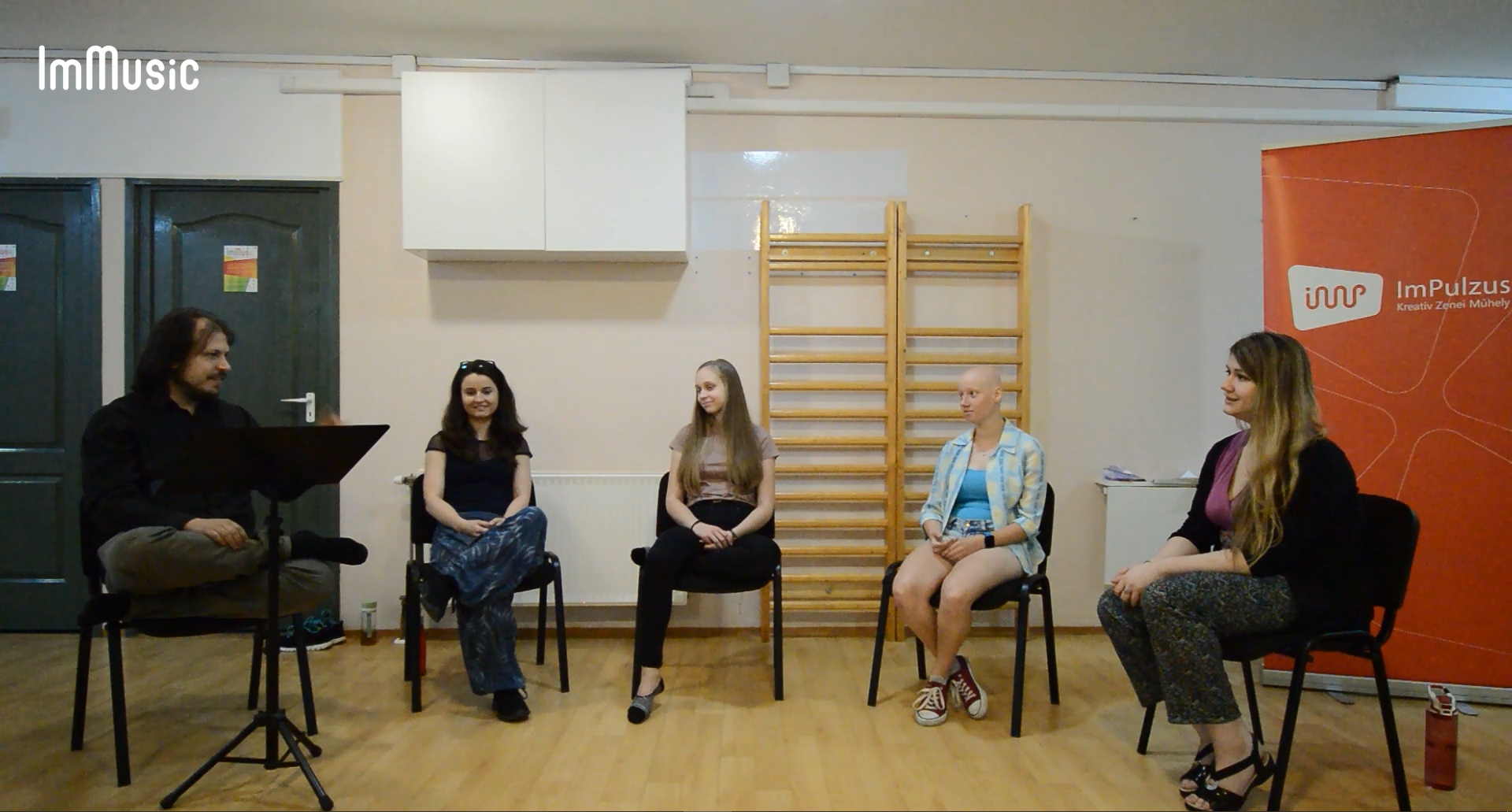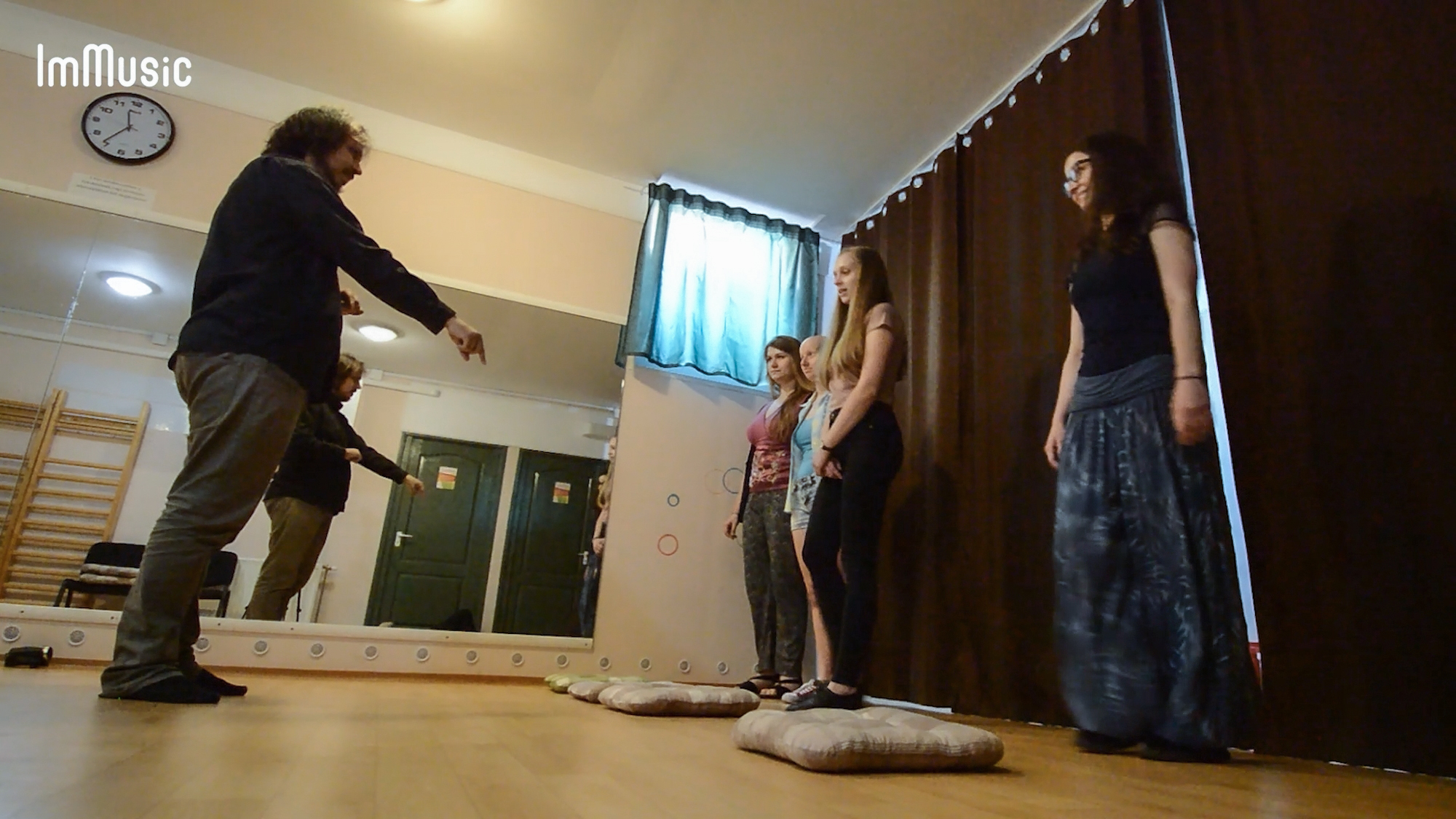Human Sampler
30

Category
vocal
instrumental
Age
8+
Number of participants
4-40
Duration
approx. 10-60 min.
Working method
group work
Musical abilities of the trainers
12 3 4 5 6
Equipment and instruments
- optional: rhythm instruments, percussion, any other instruments
Competences
- concentration
- collaboration
- attention
- cooperation
- sence of rhythm
Human Sampler
This is a game to get everyone involved – and it can range
from something very simple to quite complex.
AIM
The main aim is inclusion, team building.
Everyone is able to make a sound, feel to be included and present in the group, experienced to create crazy sounds, or even an actual piece of music.
It can also be a performance, with practice and time!
Description
This is a game where each player chooses randomly a sound and the team creates music by singing the chosen sound when the leader (DJ) makes a sign.
LEVEL 1 – Intro/Ice Breaker
- Participants stand in a circle, with their arms out in front of them (elbows bent for comfort!).
- Participants are asked to think of a sound to make, when the DJ/Producer touches/pushes down their hand.
- The DJ then goes around the circle, in order or randomly, touching/pushing down the hands, and the participants immediately make their sound when touched.
- The DJ can then make rhythms with the sounds.
- The leader then picks 1 or 2 more DJs (depending on the size of the group), and they ‘play’ the human sampler, trying to stay in rhythm together.
- Switch DJs, Change sounds.
- You can also split the group into 2, so more people can play. After a few minutes, one group can listen to the others’ sounds being played.
LEVEL 2 – Tiny Tracks
- As above, with these adaptations:
- This can all be demonstrated before you split the groups, with examples of all the sounds. This is fun – no need to be perfect!
- Split the circle in 2 – with 2 semi circles.
- Split those groups into 3 ‘Banks’ of sounds. Each bank is an element of a track: Drums, Percussion, Sounds/Samples
Bank A – Drums
Kick, Snare, Closed hi-Hat, Open Hi-Hat, Crash Cymbal
Bank B – Percussion
Hand Claps, Finger Snaps, Shaker sounds, Mouth sounds etc
Bank C – Sounds/Samples
Any sounds – these can be any sounds – random, or in tune
with each other… - Choose 1 DJ for each bank.
- Tell the groups then have 10’ to find their sounds, practice,
and create a short piece of music. You can set the length as from 30s – 1’ - Before they go off in their groups, you can demo some sounds again here, and also demo an example of what it could sound like. Give one group the sounds, then play a Hip-hop beat, a Drum & Bass beat, a House beat, a Bossa beat… etc.
- Groups then have 10’ to prepare their track.
- Performance
LEVEL 3 – Making Music
As above with these adaptations:
You can add more banks, and more DJs.
Bank D/E/F… – Bass/Keys/Singing…
You can add as many banks as you like, depending on numbers and skill level of the group.
Bank D – Bass
This can be a number of people, ‘singing’ different bass notes, OR it can be one person doing the whole bassline.
Bank E – Keys
This can be a number of people, ‘singing’ different piano/keyboard notes, OR it can be one person doing the whole thing.
Bank F – Singing
This can be one person singing a song, or just singing a melody without words, OR you can split it up into parts.
Other Banks…
Strings, Brass, Stabs, Scratches etc…
Depending on the level of the group, they can create their own pieces of music, recreate existing pieces of music/songs etc.
You can adapt things as you wish – but it’s good to have the beats, sounds/samples, percussion done by the SAMPLER, and then people can sing over the top, do harmonies, etc.
comments for facilitators
Start with slow rhythm and speed up gradually.
Each round, get participants to focus on the rhythm – especially after they have mastered the pattern.







Recent Comments